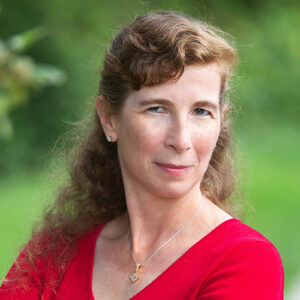Adams: The Surprising Numbers Behind Which New York City Schools Actually Educate Students

Get stories like these delivered straight to your inbox. Sign up for The 74 Newsletter
A Jan. 14 study from the MIT Department of Economics and the National Bureau of Economic Research reports that:
Estimates from … New York City suggest the relationship between widely reported school performance ratings and white enrollment shares reflects selection bias rather than causal school value-added … Higher-income and nonminority students tend to have better educational outcomes for reasons other than the quality of the schools they attend …
When assessing NYC elementary schools strictly by reported test scores, which are a key component of the performance ratings invoked above, it is impossible to avoid drawing the following conclusions:
The majority of schools where test scores indicate that more than 85 percent of students are performing at grade level (NYC average hovers around 50 percent proficiency) are either:
A) Screened schools, where students are tested prior to admission for academic ability (or, much more likely, for already knowing the material they will be tested on)
B) Schools where students are, on average, much wealthier (and usually whiter) than the rest of the city, as well as with fewer English learners
Test scores are one data point when it comes to evaluating the quality of a school. But I also encourage parents to compare them against the number of students who qualify for free or reduced-price school lunch.
At Public School 9 on Manhattan’s Upper West Side, 20 percent of students are not reading at grade level. And 22 percent of students qualify for free or reduced-price lunch.
As PS 6 on Manhattan’s Upper East Side, 13 percent of students are not reading at grade level. And 12 percent qualify.
At PS 40 in Manhattan’s Gramercy Park, 13 percent of students aren’t performing at grade level in either math or English. And 11 percent qualify.
At PS 39 in Brooklyn’s Park Slope, 12 percent of students aren’t performing at grade level in math and 13 percent qualify. At neighboring PS 107, 11 percent are not performing at grade level in math and 9 percent qualify.
If there is no correlation between these numbers at multiple schools, that’s one heck of a coincidence.
My purpose in suggesting that parents look at both numbers when selecting a school is to ask them a question echoed in the MIT study: “Are the students performing at grade level being taught better than at other schools, or do they simply have the resources to prep externally for the state tests, with their schools then taking credit for their achievement?”
Think about the mother who raged that she’d paid $5,000 to get her child ready for state exams, and now they weren’t even going to be counted toward middle school admissions. Clearly, her “high-performing” elementary school wasn’t getting the job done. So what is the value-add these “good” schools are bringing to the table?
When directing families to schools that actually appear to teach students, I point them toward outliers like Brooklyn’s Beacon School of Excellence, which has 96 percent of students performing at grade level in math, while 84 percent of them qualify for free or reduced-price school lunch, Icahn Charter School 3 in the South Bronx, where 81 of students qualify for free lunch and around 85 percent perform at grade level, and multiple Success Academy charter schools.
Those schools are also majority non-white.
The MIT study concludes that if families were made aware of which schools meaningfully contribute to students’ success rather than counting on their parents to get the job done outside the classroom, more white families would opt for schools that are currently majority non-white, leading to greater integration.
Integration has been the oft-stated goal of NYC public schools, to the point where we’ve been told everything ailing our system would be fixed once every school was an integrated school.
I have a different concern. I’m afraid that once the secret is out about some of the schools I’ve highlighted, affluent families will flock to them — shutting out the less-affluent, more likely to be minority students who have been benefiting from them up to this point, since space in charter schools, especially with the current cap, is, by definition, limited.
These less-affluent, more likely to be minority students will possibly, in exchange, be offered the magnanimous gift of being allowed to attend the “high-achieving” schools that are currently filled exclusively with students who live in the school’s local zones. If wealthy, white students abandon their neighborhood schools for ones proven to offer more value-add, then seats will become available for students from outside the zone. And less-affluent, minority students will, in all likelihood, be assigned to them in order to fill the newly available seats.
But since those schools bring less of a value-add to the students who can’t afford private tutoring and other out-of-classroom academic support, the less affluent, more likely to be minority students will end up receiving the short end of the stick yet again.
Just like my African-American father-in-law, who grew up in Virginia under Jim Crow and still mourns the loss of his all-Black schools — “They came and took all of our best teachers away!” -— and like Malcolm Gladwell, who discussed the unintended consequences of Brown v. Board of Education — I fear that such a potential switch in school assignment could end up hurting those it’s purporting to help.
Alina Adams is a New York Times best-selling romance and mystery writer, the author of Getting Into NYC Kindergarten and Getting Into NYC High School, a blogger at New York School Talk and mother of three. She believes you can’t have true school choice until all parents know all their school choices — and how to get them. Visit her website, www.NYCSchoolSecrets.com.
Get stories like these delivered straight to your inbox. Sign up for The 74 Newsletter

;)

